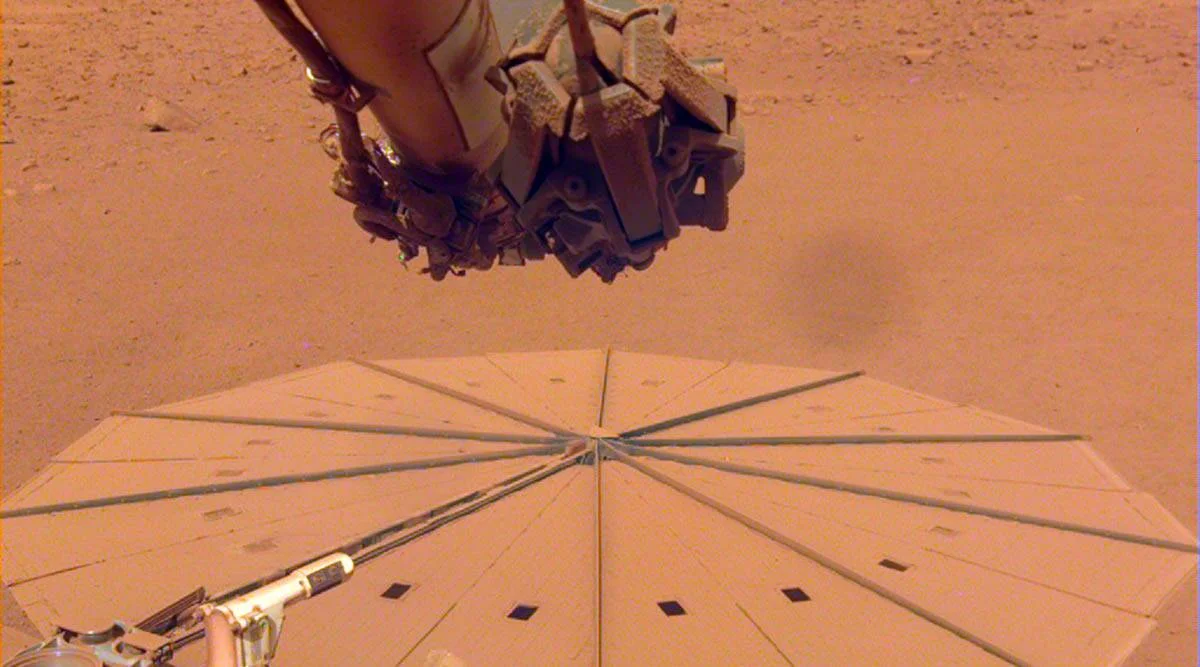Goodbye InSight! Published the last picture from the Martian module

NASA posted a selfie from the InSight Mars lander. It is expected that the device will soon stop working due to contamination of the solar panels that feed it.
The picture was taken on April 24 and can be viewed on the mission's official Twitter page. As you can see in the image, the module is almost completely covered in dust. The publication also contains a GIF image, which compares the first shot after landing in December 2018 and the last one, where the device is dusty.
Recently, the agency reported that the probe is losing power due to dusty photocells, so its scientific activity will be stopped in the summer. NASA believes that InSight will completely stop functioning in December.
The InSight mission launched on the Red Planet on November 26, 2018 after the arrival of the module. Its goal was to study the internal structure and composition of Mars, it was originally designed for two years. After this period, it was decided to continue working with the device, but over time, the solar panels became more polluted and began to generate an insufficient amount of electricity for power. At the moment, according to the calculations of specialists, photovoltaic cells produce only 1/10 of the initial power of 5000 Wh.
In the next few months, the planet is expected to increase the volume of atmospheric dust, which will have an even more detrimental effect on the functioning of the device. NASA notes that the electricity generated by the batteries is primarily intended for the onboard seismometer, which can only operate at certain times of the day. It functioned mostly at night, since at this time the wind on the planet is weaker, which made it possible to collect more accurate data on seismic activity in the thickness of Mars. The seismometer is planned to be switched off around the end of summer after the end of the scientific phase of the mission.
NASA expects that at that time the device will have enough energy to transmit data to Earth. However, according to calculations, by the end of the year, the module will lose the required amount of electricity and stop responding.
The picture was taken on April 24 and can be viewed on the mission's official Twitter page. As you can see in the image, the module is almost completely covered in dust. The publication also contains a GIF image, which compares the first shot after landing in December 2018 and the last one, where the device is dusty.
Before losing more solar energy, I took some time to take in my surroundings and snapped my final selfie before I rest my arm and camera permanently in the stowed position.
— NASA InSight (@NASAInSight) May 24, 2022
More on my final months ahead: https://t.co/eATDXbOlx2 pic.twitter.com/q7gso8NSjv
Recently, the agency reported that the probe is losing power due to dusty photocells, so its scientific activity will be stopped in the summer. NASA believes that InSight will completely stop functioning in December.
The InSight mission launched on the Red Planet on November 26, 2018 after the arrival of the module. Its goal was to study the internal structure and composition of Mars, it was originally designed for two years. After this period, it was decided to continue working with the device, but over time, the solar panels became more polluted and began to generate an insufficient amount of electricity for power. At the moment, according to the calculations of specialists, photovoltaic cells produce only 1/10 of the initial power of 5000 Wh.
In the next few months, the planet is expected to increase the volume of atmospheric dust, which will have an even more detrimental effect on the functioning of the device. NASA notes that the electricity generated by the batteries is primarily intended for the onboard seismometer, which can only operate at certain times of the day. It functioned mostly at night, since at this time the wind on the planet is weaker, which made it possible to collect more accurate data on seismic activity in the thickness of Mars. The seismometer is planned to be switched off around the end of summer after the end of the scientific phase of the mission.
NASA expects that at that time the device will have enough energy to transmit data to Earth. However, according to calculations, by the end of the year, the module will lose the required amount of electricity and stop responding.
Login or register to post comments
Comments 0